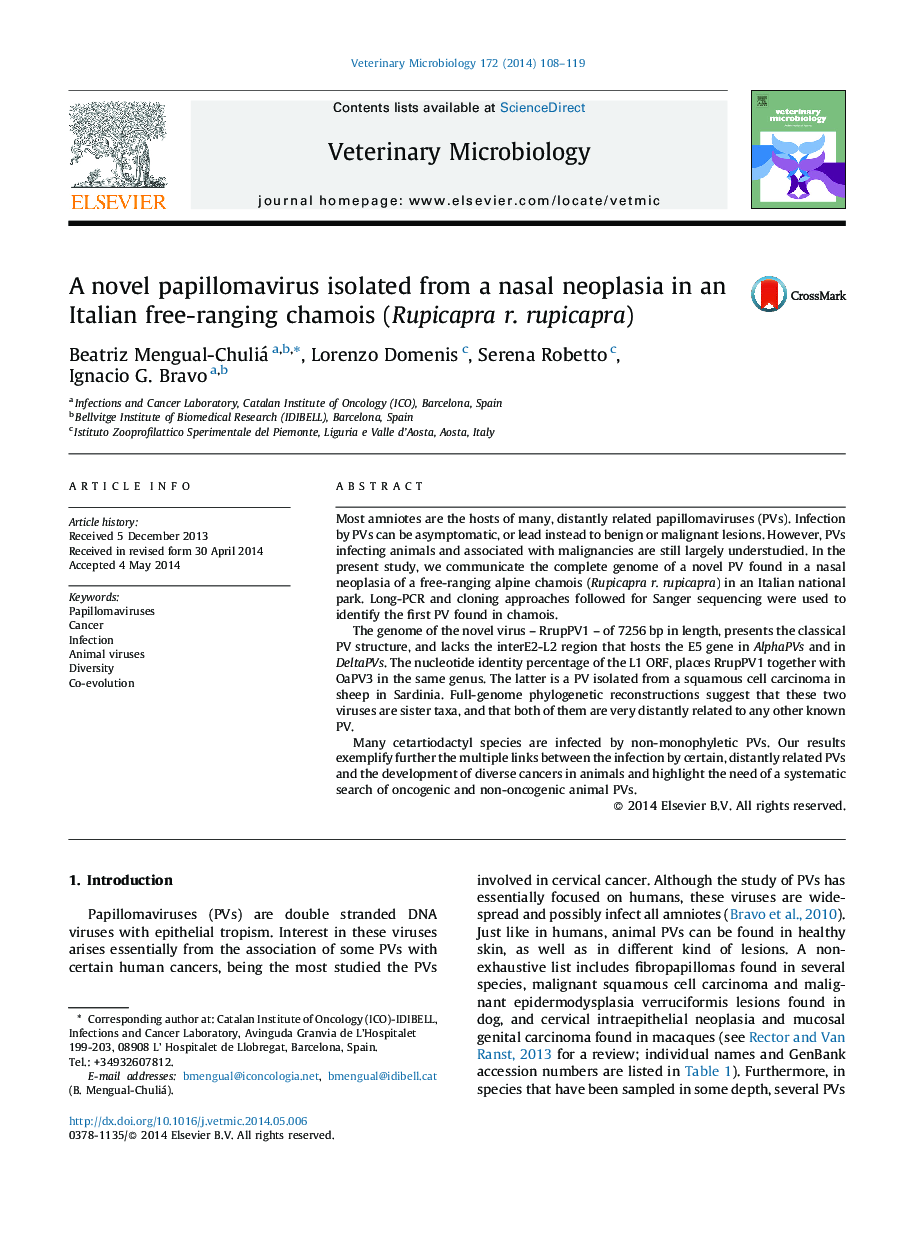| کد مقاله | کد نشریه | سال انتشار | مقاله انگلیسی | نسخه تمام متن |
|---|---|---|---|---|
| 5800812 | 1555360 | 2014 | 12 صفحه PDF | دانلود رایگان |

- Identification of a novel papillomavirus (RrpPV1) in a nasolabial tumour in a free-ranging chamois.
- The viral genome presented the classical features of PVs, in terms of ORFs, amino acid signatures and regulatory sequences.
- RrupPV1 belongs to the same genus than OaPV3. These two viruses did not belong into any of the four large PV crown groups, and were very distantly related to any other PV.
- The incongruence between the topologies of Certatiodactyla and the PVs infecting this clade reveals the involvement of alternative evolutionary processes rather than virus-host co-evolution alone.
Most amniotes are the hosts of many, distantly related papillomaviruses (PVs). Infection by PVs can be asymptomatic, or lead instead to benign or malignant lesions. However, PVs infecting animals and associated with malignancies are still largely understudied. In the present study, we communicate the complete genome of a novel PV found in a nasal neoplasia of a free-ranging alpine chamois (Rupicapra r. rupicapra) in an Italian national park. Long-PCR and cloning approaches followed for Sanger sequencing were used to identify the first PV found in chamois.The genome of the novel virus - RrupPV1 - of 7256Â bp in length, presents the classical PV structure, and lacks the interE2-L2 region that hosts the E5 gene in AlphaPVs and in DeltaPVs. The nucleotide identity percentage of the L1 ORF, places RrupPV1 together with OaPV3 in the same genus. The latter is a PV isolated from a squamous cell carcinoma in sheep in Sardinia. Full-genome phylogenetic reconstructions suggest that these two viruses are sister taxa, and that both of them are very distantly related to any other known PV.Many cetartiodactyl species are infected by non-monophyletic PVs. Our results exemplify further the multiple links between the infection by certain, distantly related PVs and the development of diverse cancers in animals and highlight the need of a systematic search of oncogenic and non-oncogenic animal PVs.
Journal: Veterinary Microbiology - Volume 172, Issues 1â2, 6 August 2014, Pages 108-119